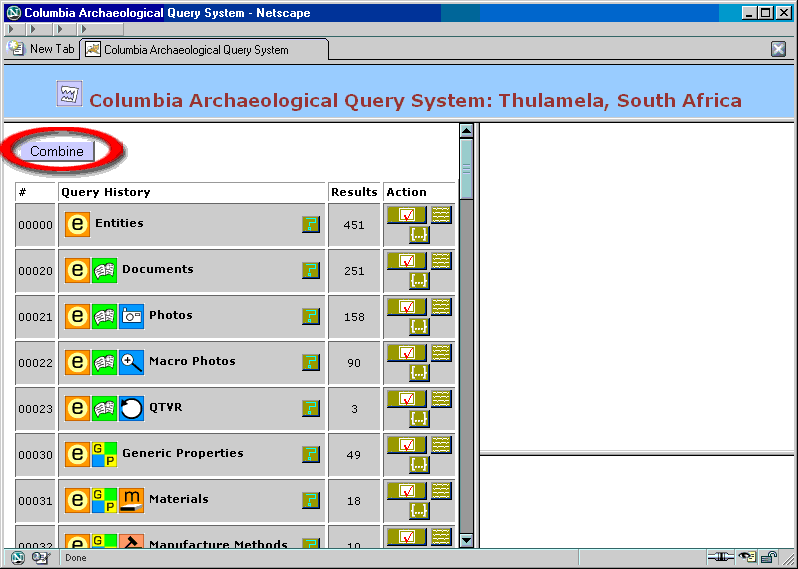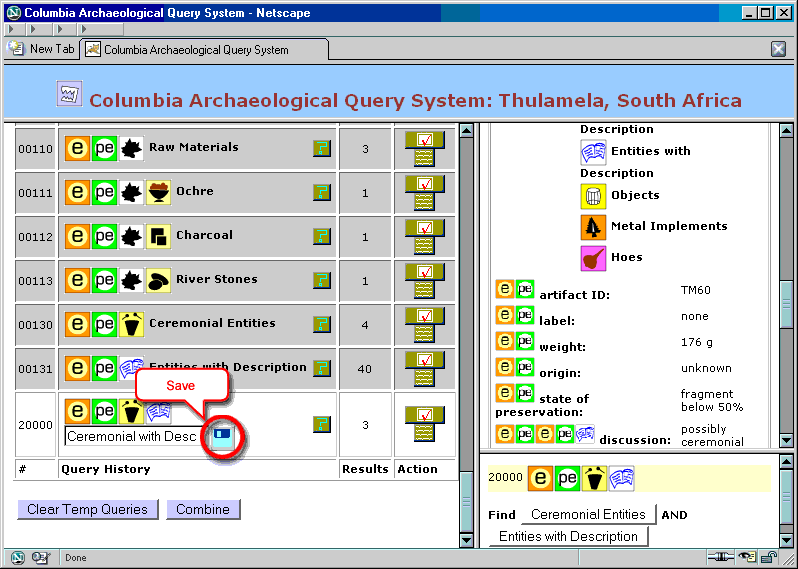We now move beyond simple exploration of the data, and into more sophisticated data analysis. Our system supports the AND and OR set operators. These operators take two or more sets as input and produce a new entity set that contains, for AND, entities that are in all input sets (set intersection), and for OR, entities that are in at least one of the input sets (set union).
Say, for example, that we wanted to retrieve all ![]() Ceremonial Entities that also have a description associated with them, i.e. belong to the entity set
Ceremonial Entities that also have a description associated with them, i.e. belong to the entity set ![]() Entities with Description. The following sequence of steps demonstrates how this is done with the Faceted Query Engine.
Entities with Description. The following sequence of steps demonstrates how this is done with the Faceted Query Engine.
We enter the combine mode by pressing the combine button.

Figure 6: Combining entity sets: entering combine mode
Next, we choose the entity sets that we wish to combine.

Figure 7. Combining entity sets: choosing entity sets and an operation
The result of our query, a new entity set, contains 3 entities. A listing of the elements of the set appears in the Details area of the screen. Additionally, as for all queries that we will see in the rest of this article, the result appears as a temporary set in the Hierarchy area of the screen, and we can choose to save this entity set for future reference, or for use in subsequent and for use in subsequent queries. To save the entity set, we must specify a name for it and press the ![]() save button next to the name of the new entity set.
save button next to the name of the new entity set.
Note that the system infers that this saved set has both the attributes of ![]() Ceremonial Entities and of
Ceremonial Entities and of
![]() Entities with Description -- both are available for subsequent queries.
Entities with Description -- both are available for subsequent queries.

Figure 8. Combining entity sets: inspecting and saving query results
© Internet Archaeology
URL: http://intarch.ac.uk/journal/issue21/3/combining.html
Last updated: Mon April 30 2007